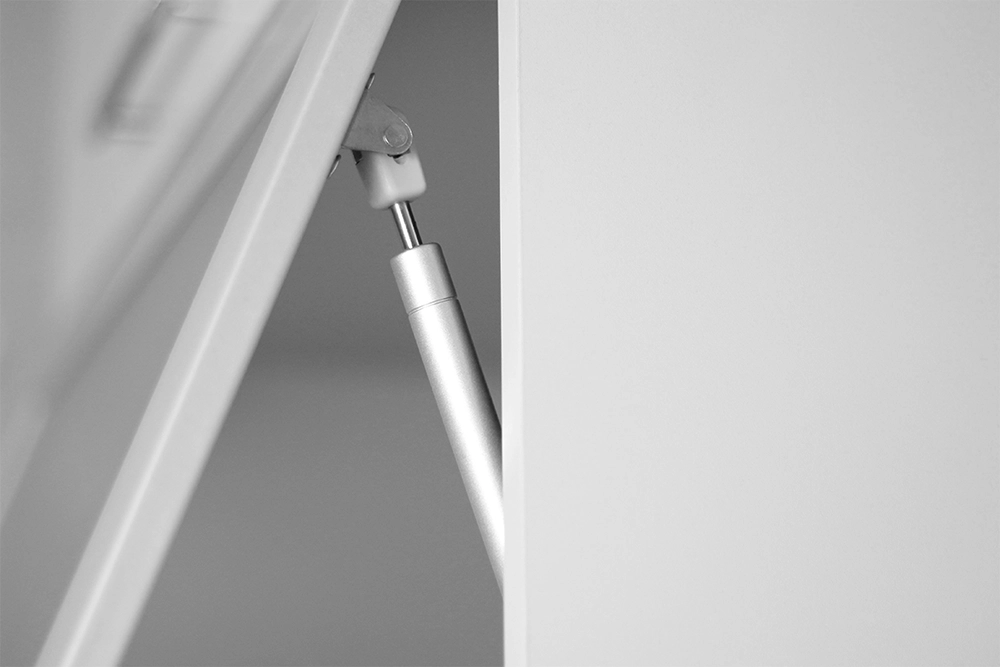Discover our full range of standard items.
Looking for a new gas spring, a hinge, or perhaps a new rubber part? Visit our different categories and use the filters to find your desired product.

Gas springs
Discover our versatile gas springs for smooth, controlled movements. Reliable, user-friendly, and durable, available in various sizes and strengths for all your needs.
Discover our gas springs
Hinges
Discover our industrial hinges, the perfect combination of functionality and robustness, suitable for various sectors. They offer smooth movements and are designed for durable and long-lasting performance, even under demanding conditions.
Discover our hinges
Rubbers
Discover our industrial rubbers, ideal for sealing or protection in demanding environments. Mainly made from EPDM, they offer excellent durability and resistance to heat, ozone, and UV radiation.
Discover our rubbers
Catches and latches
Discover our wide range of catches and latches for various industrial applications. Made from high-quality materials, they offer excellent performance and ensure a secure closure.
Discover our catches and latches
Other
Our range includes much more than just gas springs, hinges, rubbers, and fasteners. Browse through our other categories and find your product.
Discover our other productsGas springs
The lifespan of a gas spring can vary significantly depending on several factors. Generally, high-quality gas springs used under normal conditions can be loaded approximately 40,000 times. Thus, a frequently used gas spring for a kitchen cabinet will last an average of 4 to 5 years.
However, if the gas spring is used in high-temperature environments or frequently exposed to chemical products, corrosion, or excessive load, this will negatively impact its lifespan.
Regular maintenance of the gas spring, such as removing dirt and lubricating moving parts, can help extend its lifespan. Be sure to regularly inspect the gas spring for signs of wear or damage so that it can be replaced in a timely manner. This will help you avoid potential safety risks.
For example, if you have a hatch with gas springs on both sides, we recommend replacing both gas springs simultaneously. With proper installation, both gas springs will wear evenly, and their lifespan will be approximately the same.
We distinguish between three types of gas springs
What is a gas compression spring?
A gas compression spring is the most common type of gas spring and most usually referred to as just a gas spring. When the piston rod is compressed, the piston is pushed towards the gas, compressing it. This results in a buildup of pressure which in turn exerts force back on the piston. It is this principle of compression and pushing back that provides a smooth, controlled movement. Gas compression springs are commonly found in the automotive industry, furniture, and numerous industrial applications where smooth and controlled motion is desired.
What is a gas traction spring?
Gas traction springs work on a similar principle to gas compression springs. As the name suggests, gas traction springs are designed to generate a pulling force instead of a pushing force. When the external force is removed, the internal pressure in a gas traction spring ensures that the piston rod is pulled into the cylinder. This provides a smooth and controlled closing effect for things like doors and hatches.
What is a lockable gas spring?
As the name implies, lockable or adjustable gas springs contain a mechanism that allows the piston rod to be locked in a desired position. This is achieved by controlling the gas flow within the cylinder with a locking valve. Lockable gas springs are often found in operating tables and adjustable chairs such as office chairs and dental chairs.
For gas springs, it is important that, when the flap is closed, the cylinder is positioned higher than the piston rod. This ensures that the oil provides the necessary lubrication. The cylinder is the thicker, sealed tube that contains the nitrogen gas, and the piston rod is the thinner part that moves within the cylinder.
The gas spring should be installed in the extended position. It is advisable to ask for assistance so that someone can hold the moving part of the application, such as a cabinet door, in place while the other person installs the gas spring. Another option is to support or prop up the moving part.
If the gas spring is slightly longer than the mounting distance, check if the flap can be opened a bit further to increase the distance between the mounting points. However, it is better and simpler to ensure that your new gas spring has the same length as the installation distance.
On first use, it is recommended to slowly compress and release the piston rod to promote lubrication of the gas spring components.
Avoid manually compressing gas springs with a force greater than 150 Newtons. Due to the significant force required, you risk injuring yourself or damaging the gas spring.
The easiest way is to enter the unique reference listed on your old gas spring into our gas spring finder. This way, we immediately know which gas spring it is.
If you cannot find a reference on your gas spring or only have a partial reference, you can identify your gas spring by measuring the required force and the correct dimensions. With this data, you can filter through 50,000 gas springs to find your ideal gas spring.
Also, keep in mind that many existing gas spring references have identical alternatives available. You can find these at the bottom of the product page for your specific gas spring.
If you still cannot find a suitable gas spring after filtering, you can use your measurements to order a custom gas spring.
You cannot repair a gas spring yourself. Gas springs contain nitrogen gas under high pressure to support the piston rod. If the gas spring is opened while under pressure, the gas can escape at considerable speed, causing the piston rod or cylinder to be catapulted away, potentially resulting in injuries such as bruises and fractures or damage to your surroundings.
Gas springs with a force up to 150N can, in principle, be compressed manually quite easily. However, we strongly advise against doing this. If significant force is needed to compress the gas spring manually, you risk bending the piston rod due to the twisting force.
